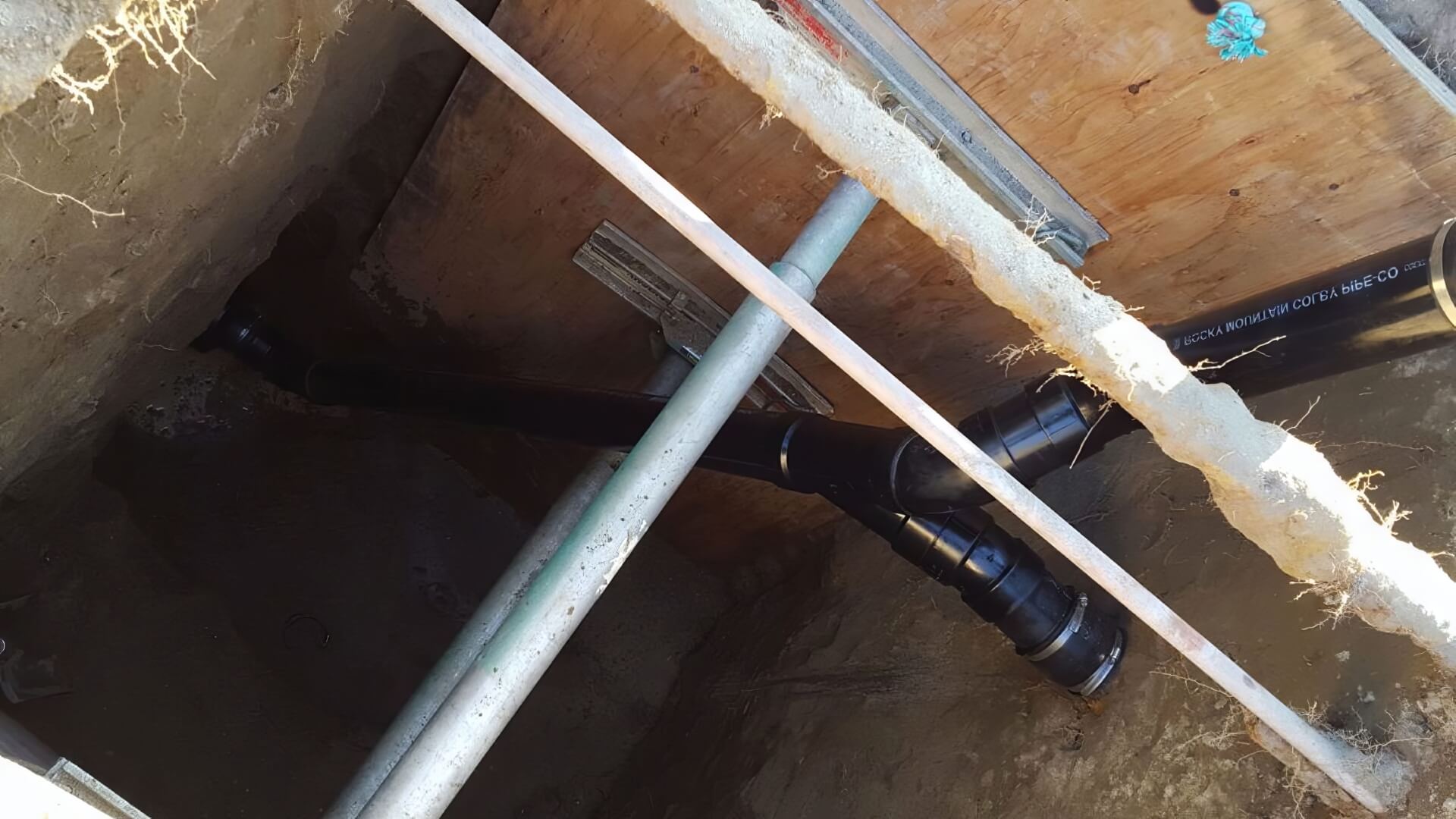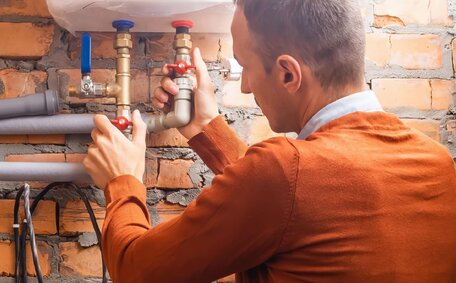Introduction: Can Bleach Unclog a Drain?
Homeowners frequently encounter clogged drains and slow water flow. But does pouring bleach down a drain effectively resolve these obstructions?
Dealing with a blocked drain can be frustrating and messy, and many individuals reach for the bleach bottle as a quick home remedy. In this comprehensive guide from Ryde Plumbing, we’ll explore if using bleach is truly an effective method for unclogging drains.
We’ll explore how unclog and clear blockages using bleach to dissolve hair, soap scum, and other build-up from various plumbing fixtures. Most importantly, we’ll provide strategies for safer, more effective ways to clear obstructions by introducing common household products into drains or seeking a professional plumber’s assistance when necessary.
Peruse further to comprehend how using bleach can unclog drains, as detailed by the specialists at Ryde Plumbing. We service the greater Ryde area and all of your plumbing services needs, including prompt drain cleaning to get your home’s pipes and water flowing freely again.
How Bleach Breaks Down Clogs
Liquid bleach, containing sodium hypochlorite, is effective for breaking down organic material blockages in drains through an oxidation process.
Specifically, chlorine, which is the bleach one of the main components, disrupts the chemical bonds that provide debris with its structure, illustrating how clean drains can be achieved. Bleach is not only capable of purging blockages but also works to clean disinfect, leaving your pipes free of hair and soap accumulations.
Eventually, this procedure fractures the clog into miniscule fragments that water can dissolve or expel, illustrating does bleach unclog blocked toilets effectively. Judicious use of bleach in modest quantities can tenderly dissolve materials, along with other things, facilitating the water down drain action.
However, bleach might be ineffective for clogs containing inorganic substances like sand or solid foreign objects, which may also cause serious blockages such as a clogged shower drain.
When Bleach is Effective For Unclogging
Bleach serves as a proficient agent to dissolve hair and bleach unclog toilet blockages caused by soap scum accumulation. Its active ingredient, sodium hypochlorite, bonds with organic materials like hair and grease, chemically helping to unclog drain as they dissolve or flush away.
If you notice your toilet seems to be flushing slowly or standing water rises worryingly high when you flush, Applying bleach strategically can assist in dislodging stubborn drain clogs, especially when left to settle in the toilet bowl before you flush toilet to clear.
The bleach will work to dissolve the hair and soap congesting the pipe; drain then rinse to allow everything to flow freely down again.
Using a combination of water dish soap to keep your shower drain clear from hair soap and body oils benefits from dish soap’s ability to cut through oils and disintegrate tangled clogs, but be wary of combining bleach hot solutions. Ensure you rinse the drain with hot water afterwards to remove any remaining residue.
It’s important to note bleach may damage pipes or plumbing systems when used improperly or excessively. However, it won’t likely clear clogs that include inorganic material such as sand, grit, or solid objects. For severe blockages, consider eco-friendly alternatives or professional assistance.
Safety Precautions When Using Bleach
Using bleach to unclog a shower drain requires adherence to safety measures because improper use can be hazardous. Here are important guidelines for safe bleach use:
- Ensure proper ventilation by opening windows or using fans to minimize irritation from bleach fumes.
- Wear gloves, goggles, and old clothing to protect your skin and eyes.
- Avoid mixing bleach with cleaners that contain ammonia to prevent producing toxic chlorine gases.
- Avoid using boiling water with bleach; use cool to lukewarm water instead to prevent chlorine gas emissions.
- Begin with a small bleach quantity and only use more if clogs don’t resolve; too much can damage plumbing systems.
- Give thought to eco-friendly alternatives to chemical drain cleaner that are kinder to your plumbing.
- If DIY options fail, call a professional plumber to safely address severe or recurring clogs.
Adhering to these guidelines minimizes risks when using bleach, but remember, it’s not a long-term solution. Instead, focus on preventive measures such as drain covers, minimizing waste, and regular maintenance.
Step-By-Step Guide to Using Bleach on a Drain
If standard methods haven’t managed to unclog your drain, you may consider trying bleach as a DIY solution. However it’s vital to follow safety precautions. Here unfolds a meticulously crafted tutorial on clear clogged drain when tackling an obstructed drainage passage:
- Begin with safer options such as a baking soda and vinegar mixture before using harsh chemicals.
- Ensure your workspace is well-ventilated before using bleach - open windows and turn ceiling fans on high.
- Wear protective gloves, goggles, and old clothing to prevent skin and eye exposure.
- Pour 1 cup of bleach carefully and introduce it into the obstructed drain (toilet, sink, bathtub).
- Let sit the bleach for up to 30 minutes to effectively break down the clog.
- Execute a thorough flush drain sequence with steaming water for an extensive duration to cleanse vestiges.
- Avoid using excess bleach as it can damage pipes - start small.
- If DIY options fail, call a professional plumber to safely remove severe/recurring clogs.
Using bleach with caution, in limited amounts, can help clear minor blockages. But take care to minimise health and environmental risks. Prevent future clogs by installing drain covers, limiting hair/food waste, and maintaining pipes.
Alternative Methods For Unclogging Drains
While bleach might be effective, alternatives pose less risk to pipes and the environment. Consider these safer options before using chemicals:
Baking Soda and Vinegar
Prior to considering bleach use, mixing a baking soda and vinegar concoction might initiate a fizzing action that chews through the obstructions in your sink. Begin by using baking soda, dispensing two cups into drain, followed by an equal measure of warm distilled white vinegar. After sealing the drain to let the mixture work, flush it down with hot water.
Mechanical Drain Cleaners
A plunger uses suction to loosen clogs, effective for both sink and tub drains.
To unclog a bathtub drain, atoilet plunger may be effective. Engage it vigorously 10-15 times.
A wire hanger, much like a simplified drain snake, uses its shape to manually extract hair, particles, and sludge from clogged pipes. Guide the snake into the drain and twist/push through the obstruction, retracting to extract debris. Best for severe clogs.
Preventative Measures
Preventing clogs starts with installing drain covers and performing regular baking soda and vinegar flushes to manage residues. Maintain pipes by systematically flushing them with hot water infused with a soda vinegar blend.
For recurring issues, a professional plumber can use a high pressure water jet to scour pipes clean or install improved drainage systems (e.g. backwater valves).
Explore these methods before using bleach, but for persistent clogs, professional plumbers, like our team, are equipped with advanced tools for safe and swift resolution.
Environmental Impact of Bleach
Bleach breakdown of organic clogs can be effective, yet its use is associated with significant environmental concerns.
A major issue is that excessive use of bleach can damage a septic system by killing off beneficial bacteria that help break down waste. Without these microorganisms, septic tanks can fail over time. The chemicals in bleach are also not removed by wastewater treatment plants, so they ultimately end up polluting waterways.
Bleach can also negatively impact ecosystems when poured down drains. Even small amounts of bleach can be toxic to fish and other aquatic life. The sodium hypochlorite breaks down into salts and oxygen, lowering dissolved oxygen levels critical for underwater plants and animals to survive.
There are also potential risks of bleach reacting with other chemicals already present in waste streams to form dangerous chlorinated byproducts. These compounds are toxic at low levels and persist in the environment.
However, occasional household use of bleach in small amounts may pose minimal risk. Still, There are safer, eco-friendly alternatives to try before you consider using chemical drain cleaners. Commercial drain cleaning solutions, such as enzyme-based cleaners or mechanical drain snakes, typically inflict less harm on the environment.
At Ryde Plumbing, we always recommend starting with preventative measures - from drain covers to waste minimisation. Maintaining pipes properly through regular cleaning can also avoid blockages forming. And when issues like unclogging toilets do occur, our licenced technicians possess state-of-the-art tools and techniques to clean your drains swiftly while safeguarding your residence and wellbeing.
Should You Use Bleach to Unclog Drains?
While bleach is a common DIY solution for unclogged drains, consider several factors before using it.
On the plus side, bleach can be exceedingly potent in disintegrating organic blockages in your kitchen sink drain. The active ingredient, sodium hypochlorite, chemically dissolves these materials over time, making it suitable for issues like a slow-draining sink in your bathroom. For minor sink or tub clogs, a small quantity of bleach can effectively help clear the blockage.
Yet, obstacles like a blocked toilet or adverse environmental implications warrant careful consideration when pouring bleach down drain.
Improper or excessive use of bleach can harm pipes and contribute to water pollution, affecting aquatic ecosystems.
Before using bleach, it is advisable to try safer methods initially. A plunger or mechanical snake can easily and manually clear debris.
Install drain screens and reduce hair and food waste to prevent blockages.
Use bleach cautiously, starting with minuscule amounts and escalating only if necessary. For significant or frequent clogs, engage a licensed plumber with specialized equipment for safe resolution.






